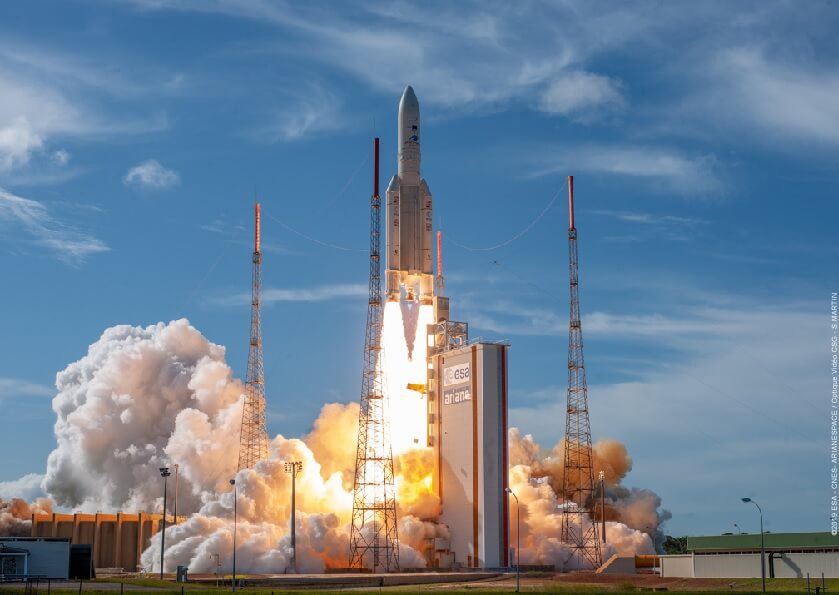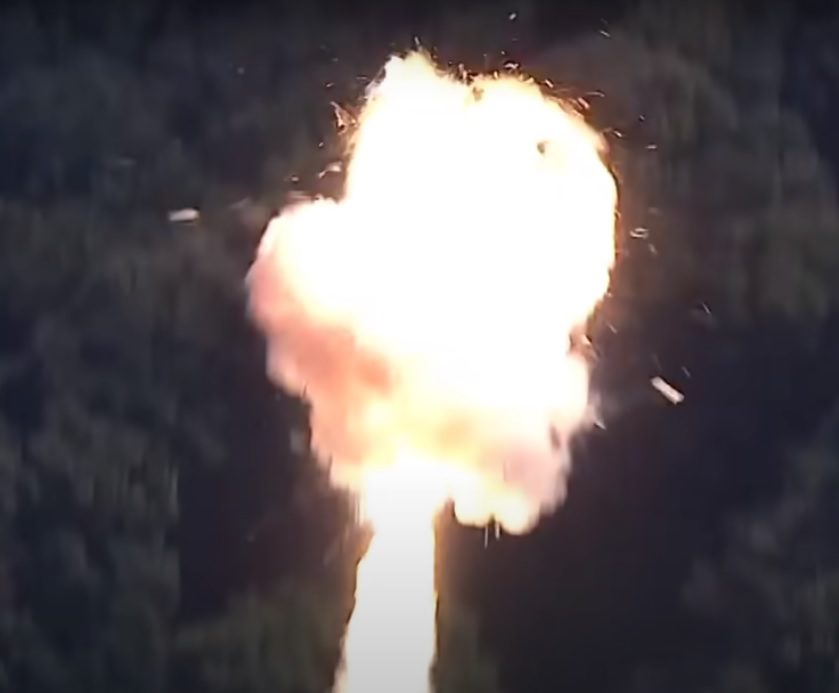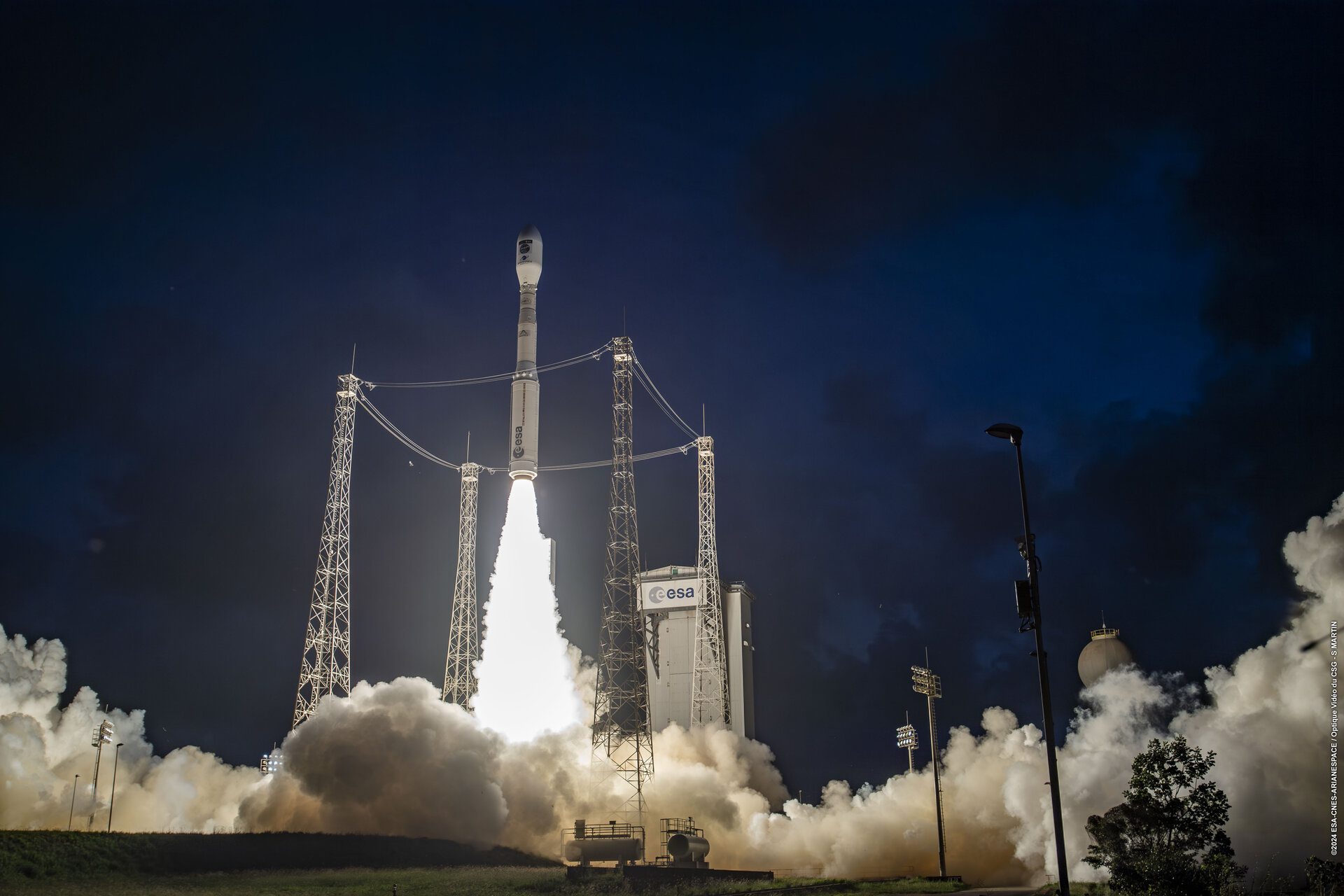At 1930 GMT, on 6 August 2019, an Arianespace Ariane 5 heavy-lift rocket lifted-off from Kourou, French Guiana, carrying two communications satellites to a Geostationary Transfer Orbit (GTO) drop-off point. This marks the third Ariane 5 launch of the year and it follows a failure in July of a Vega rocket built by Avio, of Italy, but jointly marketed by Arianespace.

The Ariane 5 rocket lifts-off carrying two satellites. Courtesy of Arianespace
Intelsat 39 with its mass of 6,500 kg was the larger of the two satellites. It occupied the Upper Berth of the Ariane 5 and so was deployed first. This unit is a dual-band comms sat, which is intended to provide service over Europe, Africa, the Middle-East and Asia.
EDRS-C, weighing 3,600 kg, occupied the Lower Berth. EDRS-C is a dual mission satellite. Its primary mission is for the European Data Relay System to provide optical inter-satellite links from GEO for LEO satellites. Also on-board is a Ka-band payload for British FSS operator Avanti Communications – called Hylas-3.
The launch of two large geostationary satellites is becoming an increasingly rare event. Not only does Arianespace have to cope with vibrant competitors such as SpaceX, it also has the downturn in geostationary communications satellites to contend with. As such, Arianespace has announced that it is to offer a ride-share mission specifically designed to carry multiple small satellites into orbit. The GO-1 flight on an Ariane 64 will carry 4,500 kg in a mixed payload of satellites on an “all the way” mission to GEO, negating the need for these satellites to circularise themselves and remove inclination from GTO.
They are not alone in targeting the smaller satellite market. SpaceX, taking note of the success of the Spaceflight SSO-A small satellite delivery mission to a sun-synchronous low Earth orbit, now plans to offer its own “bus service” ride-share missions to sun-synchronous orbit, starting in late 2020. The plan is to undercut the prices offered by smaller launch vehicles, such as Rocket Lab’s Electron, with rides priced at US$4.5 million for a 300 kg satellite.
Meanwhile, Spaceflight itself has booked a dedicated ride-share flight on India’s new Small Satellite Launch Vehicle SSLV going to a standard lower inclination LEO.
David Todd contributed to this report






